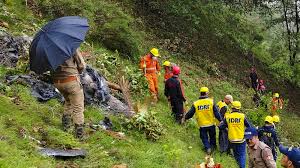Uttarakhand helicopter crash: Police accuse operator of ‘gross negligence’, book 2 managers

A devastating helicopter crash near Kedarnath on June 15, 2025, killed seven people, including five pilgrims, a child, and the pilot. Police have now charged two Aryan Aviation officials for gross negligence. They claim the flight took off early and violated key safety rules.
Pilgrimage Turns into Tragedy
The Bell 407 helicopter lifted off from Kedarnath helipad with six pilgrims. Moments later, it crashed in Gaurikund. Weather conditions were poor, with thick fog and low visibility.
The passengers were on a Char Dham Yatra, a sacred Hindu pilgrimage. This trip, meant to bring blessings, ended in unimaginable loss.
Two Managers Face Charges
Uttarakhand Police filed an FIR against Kaushik Pathak and Vikas Tomar. Pathak served as Aryan Aviation’s Accountable Manager. Tomar helped oversee flight operations.
The charges include:
- Section 105 of the Bharatiya Nyaya Sanhita (culpable homicide not amounting to murder)
- Section 10 of the Aircraft Act, 1934
Officers said the flight departed 30 to 50 minutes early, violating its assigned 6–7 AM slot. The company also skipped weather checks, a basic safety requirement under DGCA and UCADA rules.
Authorities Call It Preventable
Investigators believe this crash didn’t result from a mechanical fault. Instead, they call it a Controlled Flight Into Terrain (CFIT). This occurs when a working aircraft hits the ground due to poor visibility or misjudgment.
Police said the managers failed to follow rules. They allowed the flight in unsafe weather. These decisions likely caused the accident.
Government Takes Swift Action
Chief Minister Pushkar Singh Dhami suspended Aryan Aviation’s Char Dham operations. He also grounded all charter helicopter flights in the region for two days. This allowed time for a full investigation.
The Aircraft Accident Investigation Bureau (AAIB) is leading the probe. Officials are analyzing flight data, pilot logs, and weather reports.
Dhami promised accountability. “We won’t tolerate any compromise on safety,” he said in a public statement.
Safety Rules Under Scrutiny
This tragedy isn’t the first. In May, a crash in Uttarkashi killed six people. Two TransBharat Aviation pilots were later suspended for flying in similar conditions.
These incidents point to deeper issues. Oversight appears weak. Operators are taking risks during bad weather.
Regulators are now planning reforms:
- Allow only twin-engine helicopters in high-altitude areas
- Install live weather cameras at helipads
- Enforce strict pre-flight checks
- Release updated SOPs by September 2025
These steps aim to prevent future crashes and improve passenger safety.
Grieving Families Demand Justice
Families of the victims want strong legal action. They say this crash was avoidable. “Someone made a reckless choice, and we lost our loved ones,” said one relative.
Many also criticized poor communication. Some families learned about the crash hours later. They received little support or information during those early moments.
Can Reforms Prevent More Crashes?
The Kedarnath crash has exposed serious flaws in pilgrimage aviation. Char Dham flights serve thousands. But speed must not come at the cost of safety.
The government has started corrective steps. The courts will now decide whether the accused managers are guilty. The AAIB’s final report will provide more answers.
Real change will depend on what happens next. Will these reforms stick? Will companies follow the rules?
For the families, justice is only the beginning. They want safer skies for future pilgrims.






